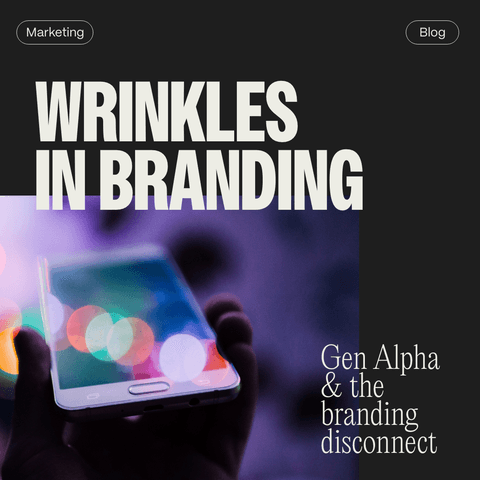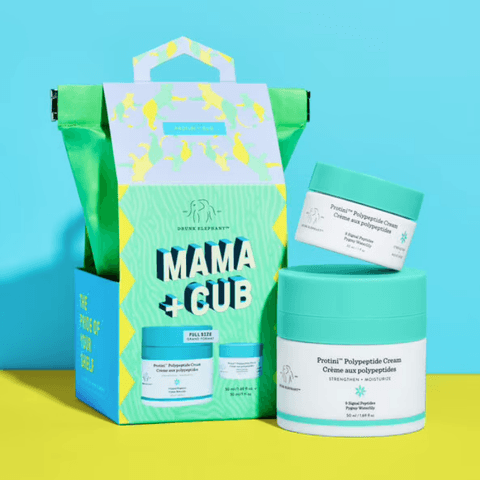NEWS ALERT - We won a SILVER IPM award for Best use of Social Media, 2025! Read more🏆

Born into a digital world of constant connection, Gen Alpha is a generation shaped by screens and swipes. With approximately 2.8 million new babies born globally each week, they're the future of consumer culture.
Understanding Gen Alpha's habits is crucial for brands. In this blog, we'll explore this new generation and how brands can connect with them effectively. Plus, we'll discuss recent buzz about brands not quite hitting the mark with this young audience.
Gen Alpha is the generation of people born between 2010 and 2025, meaning that millions are yet even to be born. Although they are not the first generation born into the digital era, they are the primary group raised in a more diverse and technologically-first world. Looking at the statistics, this generation is already shaping up to be different to any before. They are set to be the most diverse generation in history and 65% of them will be working in jobs that don’t even exist today.
As they are raised in this ever-evolving world of technology, their immersion in digital platforms will influence their communication style and engagement preferences. They will likely be prioritising personal and seamless experiences that require quick responses and instant gratification. They seem to have a strong focus on digital, but also on ‘the greater good’. Sources show 66% of Gen Alphas prefer to buy from companies that make a positive experience in the world. They believe in social acceptance and environmentally conscious practices.
As they're growing up in an age of social media and influencers, tweens and children are jumping on the bandwagon with any new product or routine their favourite influencers are using. Skincare routines and GRWM (get ready with me) content is everywhere, and many of Gen Alpha are already joining in and looking for the best products. However, the problem here is that many of the influencers are a lot older than the children and tweens watching their videos, and many of the products they use are not suitable for younger skin. Not only that, but social media has created a buzz around certain brands like Sephora and Drunk Elephant. You may have already heard of the term ‘Sephora Kids’ being thrown around when it comes to skincare. Let’s dive a little deeper into each brand and the shopping habits of Gen Alpha.
Skincare experts are applauding the fact that young kids are taking an interest in looking after their skin, however, this is also cause for concern, as the kids are invested in the products and the brands they are choosing. Account manager, Dom Rekas, has been keeping a close eye on what's going on in the skincare world, and had this to say:
There have been a lot of comments made across platforms like TikTok, explaining that Sephora stores are full of Gen Alphas who are buying products that may not be right for them. They walk into stores and buy the trendy products they’ve seen online, without asking for advice or recommendations. The tweens gravitate towards these brands for the same reason that adults do. The brand and marketing are appealing, as well as the try-before-you-buy options, but a lot of these children are unaware of the risks that some of the products they’re buying can have on their skin. In extreme cases, this has been known to cause “unnecessary damage such as rashes, allergic reactions and even skin burns”. Brands and influencers must be aware of this, and use their channels and influence to educate the younger generation (and their parents) when it comes to ingredients in the products.
Many of the brands in Sephora are expensive and it’s feared that a lot of this age group are only buying these products to be a part of the trend. They don’t understand what ingredients are in the product and that some of these skincare products will cause more harm than good. One such brand that has got a lot of press recently is Drunk Elephant; let’s explore more about this brand.

The branding mismatch with Drunk Elephant has been a hot topic lately, especially on TikTok and the media. The brand has a youthful vibe with colourful and fun packaging that naturally appeals to a younger audience.
However, they offer products specifically for adults and separate products for the younger audience. The problem here is that the Gen Alpha age group are interested in anti-ageing products. These products are produced for consumers looking to tackle wrinkles and ageing skin; not something the younger audience needs to worry about just yet. Despite this, teens are still getting into the wrong products as they see influencers promoting them - as well as the visual appeal of the brand and marketing.
This rapid engagement has raised concerns about branding and marketing when it comes to skincare products. Effectively, brands like Drunk Elephant may unintentionally make their products attractive to Gen Alphas, even though the product is not meant for them. Many contain ingredients such as retinol, which could be risky for younger and more sensitive skin. The founder of the company has even had to release a statement on her personal social media warning tweens and kids to stay away from the more potent products that include acids and retinol, as their skin does not need these ingredients yet.
Brands have a responsibility not to make themselves too attractive to people who actively shouldn’t be using them, at the same time as making themselves appealing to those who could be valuable consumers, and to whom they could make a really positive difference.
Obviously that entails giving consideration to the possible reactions of every audience who could come into contact with the brand, and then putting in place measures to ensure that they perceive its use and benefits clearly and that they understand who it's for and who it's not for.
But it's also about speaking clearly and pointedly to the intended audience - obviously every brand wants to show its relevance to its desired audience, but, if done well, it can also subtly but impactfully demonstrate its IRRELEVANCE to others.
But it's a tricky balance, as our Head of Brand, Jo Reid highlights:
As the world evolves, brands must be more aware of their ethical and moral responsibility. Although most would understand that Drunk Elephant hasn’t intentionally meant for the above disconnect, it’s a clear example of how businesses should think about their brand and how/where it’ll be perceived. Branding should speak clearly to the intended audience and educate them about the product; everything else is white noise. Working with influencers in a more strategic way could also help shape how the audience sees the brand.
Despite their success, Drunk Elephant has found that getting your brand and marketing right can be difficult. Fortunately, we have a team of experts who can help iron out any wrinkles in your strategy and smooth your customers’ experience. If you want to create a new brand or refresh an existing one, that puts your consumers at the heart, contact the team today.
_____
Image source:
Drunk Elephant: https://www.drunkelephant.co.u...